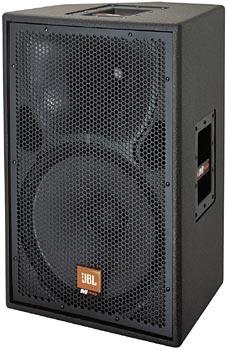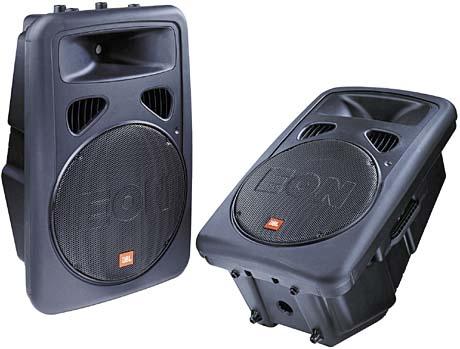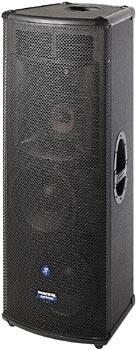Speakers
(Image from JBL) This is a 15" speaker with a tweeter. It is designed with a frequency spectrum from 20,000Hz to 44Hz. This is a high range compared to other speaker, way too loud for a dorm room. The power capacity for this speaker is 350 watts. The maximum power that this unit could handle is 1400 watts. While 350 watts could seem loud, it is best to run at least 700 watts per speaker. A cool aspect about hooking up speakers is that they could be daisy-chained together in a parallel or series combination. This particular loudspeaker is 8 Ohms. In parallel, speakers could be reduced to 4 Ohms and 2 Ohm. A rule of thumb with speakers and power amps is that less resistance of the speaker will draw more current. A cabinet like this is called a two way system (tweeter and driver). Calculations for determining the total ohm rating of a combination of speakers. For a parallel circuit. (in Ohms) For a series circuit. (in Ohms)
(Image from JBL) This is an 18" subwoofer. It is designed for all low sub frequencies. A human ear is not designed to hear bass by nature; we hear more midrange-high frequencies. So more power is needed for subwoofers, these speakers displace a lot of air, and good cabinet design is needed to achieve maximum performance. It is not necessary to have these to achieve great sound; it does not hurt to have them though. Most dance clubs need subs to have the "feel it" effect. When in a loud situation, a person is more likely to feel the subs in their chest and ears than any other frequency. With two of these 18" subs, a minimum of 600 watts per speaker is needed for decent head room; the recommended peak power capacity is 2400 watts. This particular setup is 4 Ohms impedance. When used with a main cabinet, this really improves the overall sound.
(Image from JBL) Not all speakers need a separate power amp, these speakers have one built in. This makes setup less complicated. Self powered speakers are also known as active cabinets.
(Image from Mackie.com) This is another active setup, instead of just offering a two way (tweeter and driver) reproduction, this system is known as three-way. It has the basic tweeter, and driver, but has an additional smaller driver that improves the overall midrange for a fuller sound. In this case, a subwoofer is not needed due to the whole frequency being supported
(Image from JBL) Here is another example of a package system that could be used for smaller setups. These speakers are also active and do not need a separate power amp. < Introduction | Mics | Mixers | Effects | Poweramps | Speakers | Works Cited > |




